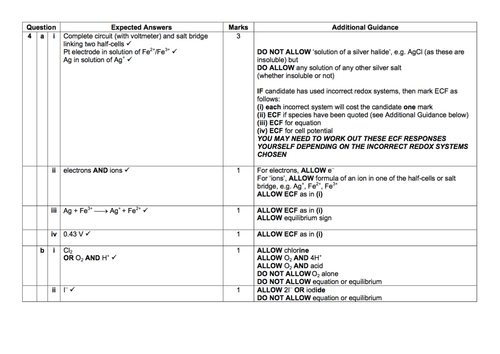



This is a lesson for Senior High School Chemistry on electrochemical cells. It starts with students constructing a fruit cell and combing four of these cells to make a battery that powers a light bulb . These are made from a whole lemon, piece of clean copper, piece of clean zinc, electrical wires, crocodile clips and light bulb. This could be shown as a demo if there is not much time. Students offer explanations as to how this works. They are introduced to the theory behind how batteries work, what a half cell is and notation for writing half cells and E-cell. The hydrogen / H+ / platinum reference electrode is then introduced as a standard that is used to compare the voltage different half cells. Reinforce the idea that platinum is used because it a very unreactive electrical conductor. Students then use the electrode potentials table (go through this) to write the voltage and reactions for different combinations of half cells. This could be set as homework instead. The lesson finishes with an exam question plenary. Please rate this resource and leave feedback.
Something went wrong, please try again later.
This resource hasn't been reviewed yet
To ensure quality for our reviews, only customers who have purchased this resource can review it
Report this resourceto let us know if it violates our terms and conditions.
Our customer service team will review your report and will be in touch.
$5.00